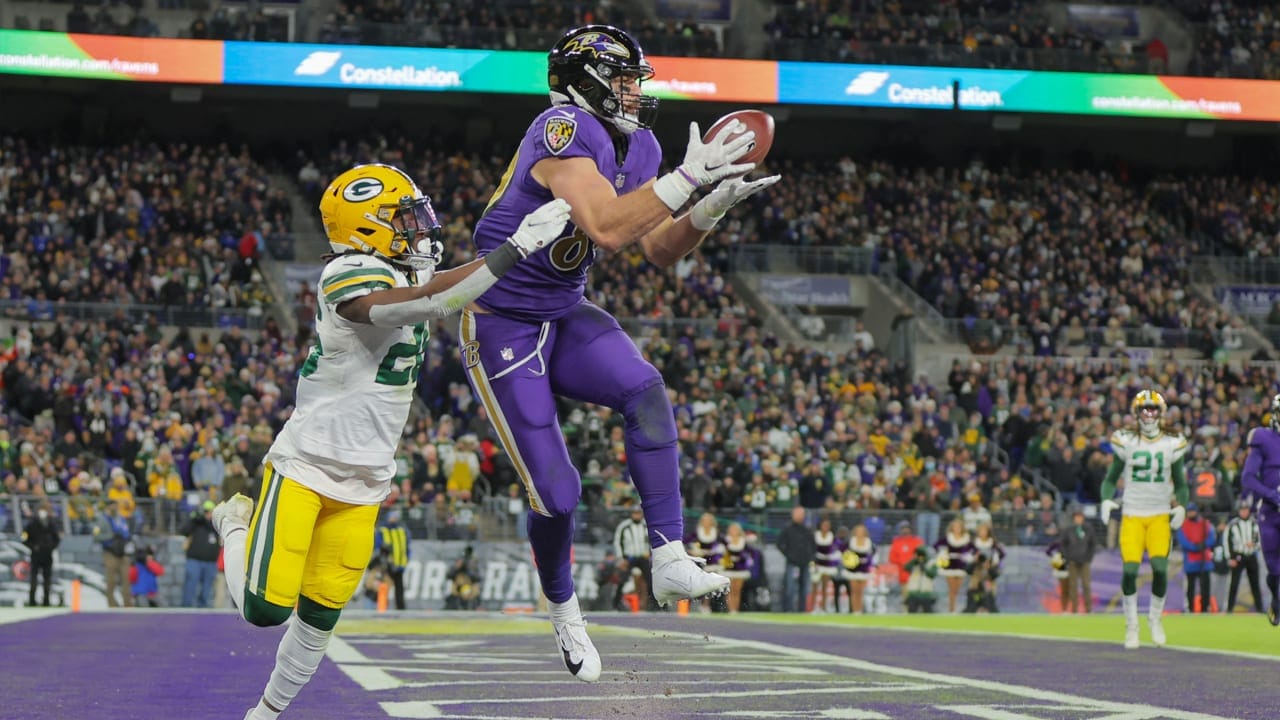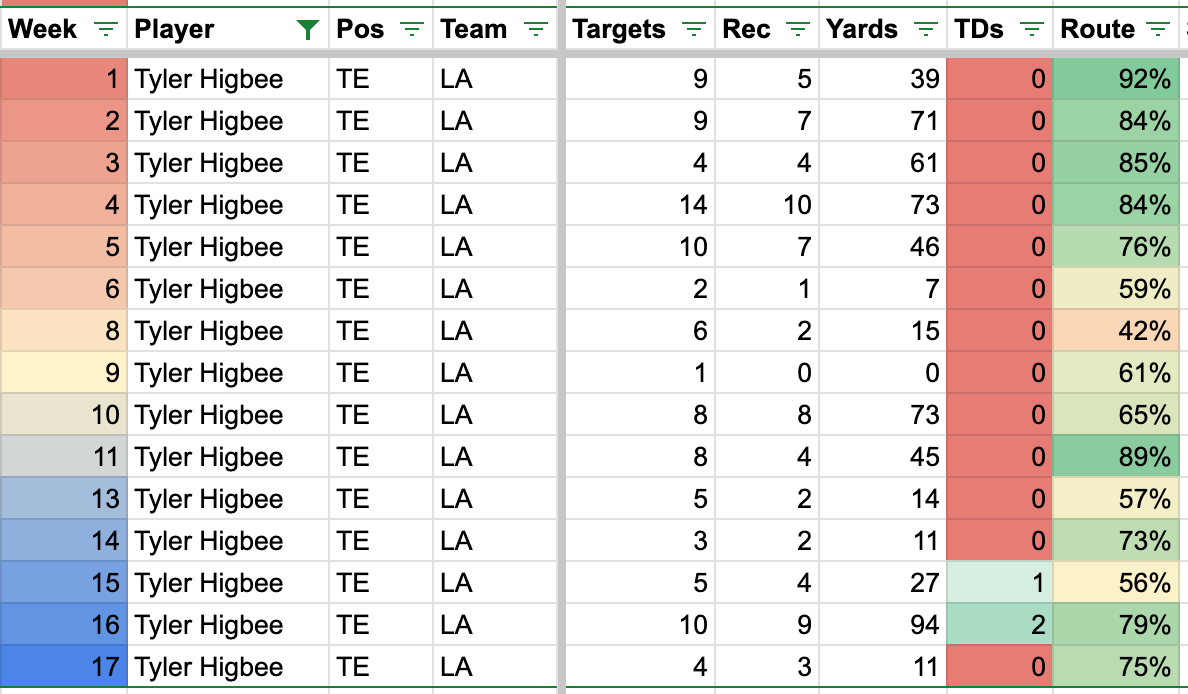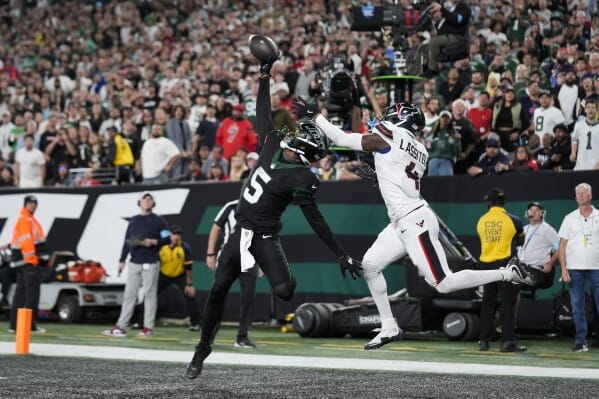
Mark Andrews Checks All the Boxes
Tight end is a fantasy enigma. The position is both low scoring and maddeningly difficult to project. And yet, hitting one of the position's few elites can produce tournament-winning results.
And personally, I find the TE position fascinating. It should be a position where we exclusively throw cheap darts with the blind hope of hitting on TDs in the right weeks. And honestly, TE scoring is random enough to play it like that.
But that's not the only option—because the NFL always seems to have a few tight ends playing a different position than the rest.
These players are operating as elite receivers... despite playing at weights similar to the EDGE players they may be blocking.
When a receiver occasionally blocks a 190-pound CB for a few seconds, he's held up as the pinnacle of manliness. Tight ends are blocking dedicated run stoppers. And they do it a lot. The fact that some of these TEs can produce elite receiving efficiency is incredibly impressive.
But when looking for a tight end who can rise above the baseline chaos of the position, what are we actually looking for? To put it simply... we're looking for Mark Andrews.
In Part 2 of this article series, I'll apply Andrews' elite profile to the rest of 2023's highly drafted TEs. But first, what makes Mark Andrews such an elite NFL player and 2023 fantasy value?
Impact Tight End Seasons
To establish the target profile at tight end (which Andrews fits perfectly), I took a look at TE scoring since 2010 and pulled out what I will refer to as "impact seasons."
These impact TEs posted 150+ PPR points and averaged 12+ points per game. The idea was to capture difference-making weekly plays who totaled enough overall points to boost rosters. I then used these seasons to determine some key traits for our future TE draft picks.
You can view the 66 qualifying seasons here.
Lack of Pass Blocking
Watching a TE pass protect is frustrating—assuming you're invested in his receiving stats. This is why Denny Carter often jokes about being out on tight ends who are good blockers. And blocking really can hurt fantasy production.
Tyler Higbee is an excellent example of how things can get out of hand. Higbee was asked to block on 93 passing snaps last season.
These protection assignments directly impacted Higbee's ability to earn targets. Because while tight ends sometimes block as part of a screen target setup or chip a player and then run a route, it's generally easier to get open if you don't have to block a dude.
By contrast, Mark Andrews was asked to block just once during the entire 2022 regular season and playoffs.
This freed Andrews up to run routes at an elite rate. His 88% route participation was tied for TE1.

It was a very different story for Higbee, who ran routes more like a part-time player, with just 70% route participation.

This was a frustrating outcome for Higbee drafters, given that he was actually playing a full-time role.
In fact, Higbee's 87% snap share last year was higher than Andrews' 83%. But Higbee's snaps got hit with a pass-blocking tariff, while Andrews' snaps were tax-free.
Higbee still managed to turn in a very useful fantasy season, but it was bumpier than ideal, with his route participation and targets shifting dramatically for stretches of the year.

Higbee was at only a 9% pass blocking rate in 2021, but in 2022 his pass-blocking rate ballooned to 17% as the Rams dealt with offensive line issues. It didn't ruin his season, but definitely made it less fun.
80% of impact TE seasons have come from TEs who have pass blocked on less than 12% of their passing snaps. So, to be fair, some level of pass blocking is tolerable. But a meaningful pass-blocking rate is still a red flag when looking for impact outcomes.
A high pass blocking outcome is not on the table for Andrews, whose career high in pass-blocking rate is just 2%.
Proficient Run Blocking
Although we don't want our tight end selections to be called upon as blockers in the passing game, they should ideally be competent run blockers.
The key is that we want our tight ends on the field for play action passing attempts.
Play action is generally an efficient means of passing the ball. With linebackers forced to respect the run, the tactic can open up big plays in the passing game. And play action passing is especially important for tight end production.
Last year, 24% of WR targets came on play action passes. And WRs generally benefited from these targets, with 26% of all wide receiver TDs occurring on play action. Faking the run boosts WR scoring, but modestly.
It's a different story at tight end.
Last season, 33% of TE targets came on play action, but those targets produced 45% of all tight end TDs.
The last five seasons bear out this overall trend. Tight ends benefit disproportionately from play action passing... making it vital that they are on the field for run fakes.

Crucially, many of these play action passes occur with just one tight end on the field. 44% of play action TE targets were out of single TE sets last season.
This reinforces my skepticism of tight ends in a "big slot" role. My initial skepticism came down to the simple fact that NFL teams don't tend to pass out of 2TE sets very much.
Last season, NFL teams deployed 12 personnel (1RB-2TEs-2WRs) on just 16% of passing snaps. The Ravens were the biggest outlier. But at just 35%, 2TE sets were still a clear minority of their dropbacks. And the Ravens were the only team above 30% last year.
"Big slot" snaps are fun, but they aren't enough on their own. It's still vital for TEs to see starter-level snaps in traditional alignments. 72% of 2022 passing attempts came out of 11 personnel (1RB-1TE-3WRs). We really want access to those routes.
But based on the data above... we should prioritize TEs who have locked down their team's traditional TE snaps—because those players are positioned to soak up valuable play action targets.
(As a quick aside, "slot" snaps can be misleading when determining who is and isn't a traditional tight end. TEs are typically charted as being in the slot even when lined near their traditional spot on the right side of the formation but not directly on the line of scrimmage. The critical point is that we want TEs who run routes in 3WR sets and on play action passes. Where a TE lines up on those snaps isn't always a significant factor.)
The play action data above is interesting at a macro level, but the averages obscure some of the most interesting player-level results.
For example, all seven of Cole Kmet's TDs last season occurred on play action. Kmet has been an underwhelming fantasy producer... but imagine how bad he'd be if he weren't a good run blocker.
If you're wondering why you know Brock Wright's name... it's because of play action targets. Wright saw 15-of-23 targets and 4-of-4 TDs on play action last year.
Even Travis Kelce saw a massive boost from play action, with 5-of-16 TDs occurring on play action last season (including the playoffs).
And we don't need run-blocking superstars to produce difference-making play action production. Mediocre blocking is perfectly fine for our purposes. Since 2010, 86% of impact TE seasons have come from players who posted a PFF run-blocking grade of at least 55.
Coming off a season with a run-blocking grade of 70 and a position-leading 43 play action targets, Mark Andrews is perfectly positioned to punish defenses for overplaying the Baltimore run game.
Route Volume
The focus on blocking comes down to a simple bottom line: We want tight ends who run a lot of routes. And while it's helpful to understand how TEs can work into high-route roles – given that it's a unique position – the end goal is the same: routes. Routes help lead to targets and targets to fantasy points.
Unsurprisingly, most impact TE seasons have come from players with solid route volume. 82% of impact TEs since 2010 have run at least 29 routes per game.
Interestingly, Mark Andrews has twice produced an impact season with fewer than 29 routes. He posted 208 PPR points on just 21 routes per game in 2019 and 170 PPR points on 26 routes per game in 2020. But in 2021, he spiked to 37 routes per game and was at 29 last season.
And crucially, Andrews also had elite 88% route participation, tied with George Kittle and Dallas Goedert for the highest in the NFL.

All four of last year's impact TEs – Kelce, Andrews, Kittle, and Hockenson – had route participation of 80%+.
Andrews' 29 routes per game were barely sufficient last year for a normal tight end. But his elite route participation provides upside for a route-volume spike if the Ravens drop back more frequently—as they are openly stating that they will.
Route-Running Skills
Running routes is great, but if you can't get open, routes won't reliably lead to targets.


